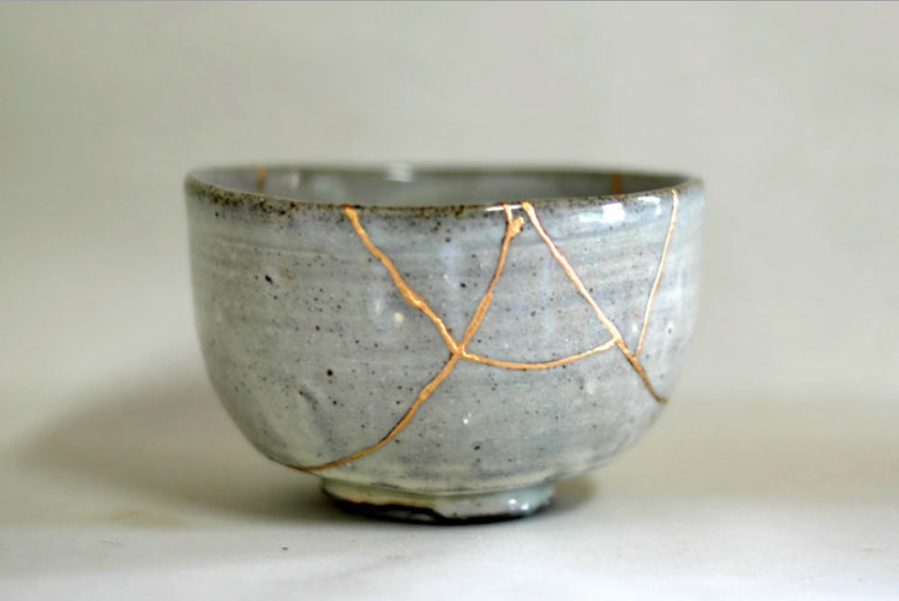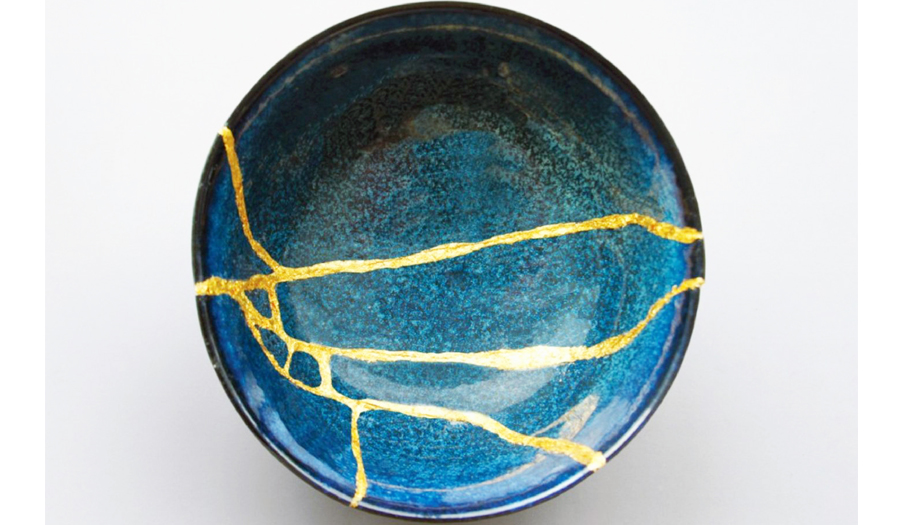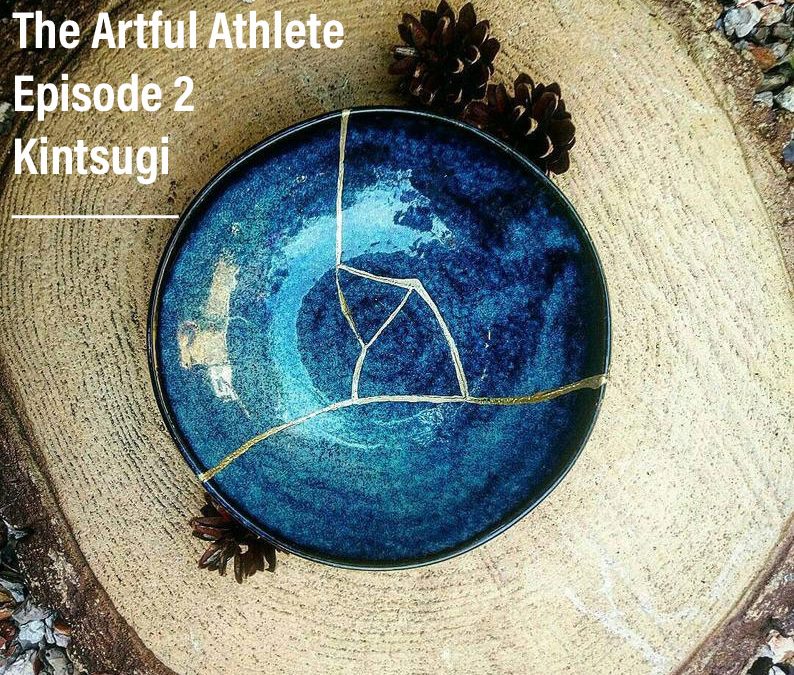Podcast – Episode 2: Kintsugi

Written by Ségolène
I recently looked into
the Japanese art of Kintsugi.
Kin, meaning golden, sugi, meaning joinery.
One day, Japanese commander Ashikaga Yoshimitsu‘s favorite tea bowl fell on the floor, shattered. He was heartbroken because it was this bowl meant the world to him. I’m sure you’ve experienced something similar: we all have a favorite cup or glass at home.
Yoshimitsu gathered the fragments of the broken bowl from the floor and shipped them to China as the bowl was originally from there. He asked the craftsmen in China to repair it so he could use it again.
However, when he received the bowl back, he was shocked, angry, and a little bit offended to see what the craftsmen had done to his favorite tea bowl. They had just patched it up and added some staples along the cracks of the broken ceramic.


“It was the best they could do”, they said.
Imagine your favorite teacup, something happened, it fell, you’re sad.
You send it to the people to fix it, and they send you back something tremendously
ugly and unpractical.
Yoshimitsu would not have this and took the broken patched up bowl to Japanese craftsmen.
He commanded them to find a new way of fixing the ceramic without turning it into something impractical and ugly: it needs to be given a new life.
Fast forward a few weeks later, Yoshimitsu is presented with his fixed tea bowl.
What the craftsmen had done is taken the broken fragments and glued them carefully
back together using a lacquer inflected with gold powder. The fractures, the broken hairlines all around the bowl, these perfectly healed golden scars, elevated the object’s beauty by highlighting its history. The gold was giving it a new life, a new shape.
And this is how the philosophy behind the art of kintsugi came to be. It’s not about just taking a broken object and fix it. It’s about taking what’s broken, but to turn it into something more beautiful than the original.

These golden lines, are not here to act as a reminder of the death of the object, but rather the moment its life changed. The lines are a reminder of the history of the object. The broken, the imperfect, is not hidden away. It is clear for all to see. However, where once it had broken, it is now full of light. In the same way that we say for humans that the place where the bone broke will now be the strongest part of the body, the golden lines are now the strongest part on the vase, on the tea bowl, on the object that once was broken.
I suppose you could say the moral of the story is deeper than simply repairing what was once broken. Repairing requires transformation. Repairing ourselves requires transformation. And the place where we once were fragmented, where we were fractured, will grow stronger. They will shine with light. They’re a part of your history, a part of you, you won’t forget, a part of your odyssey.
In the age of social media, with life bombarding us with ideals of perfection, it can feel that life has taken on a habit of dealing us deadly blows, shattering moments, situations where we feel our dreams, our creativity, our voice, our essence are being threatened. Sometimes this is enough to cause a break within. A burnout, an implosion. We become fragmented.
Do we stay in this state of brokenness? Do we let this define who we are, or can we put some gold on our fractures too? Can we look at the person that existed before the break, embrace them, let that person know everything’s going to be okay, let them know that you’re grateful for what they did and for who they were. That yes, the teacup shattered, and now we’ve turned away from our creativity, however, we can’t keep on staring at the break. Otherwise, the teacup will shatter in front of our eyes forever. We’ll let it define our image, our worth, our souls.

In a darker season 2 of Bryan Fuller’s Hannibal, this is very much discussed and explained using this same metaphor of the broken teacup. Until you foster a change, a sustainable change, “we will always come back to this moment, when the teacup shatters.” It’s not a cheerful show, but if you’re interested in human psyche, food art and thrillers, I wholeheartedly recommend it. Once you’ve watched season 2, send me a message or leave a comment. There’s plenty to discuss!
To leave you on a more hopeful note: For us to not stay stuck at the moment when the teacup shatters, we’re going to accept our brokenness.
Spend time with it, like a puzzle, looking at where each fragment used to be and find the glue that fits you.
If you were a piece of ceramic, what would you be? Would you be a bowl, a plate, a vase, a teapot? Would you use gold or would you go for another colour?
That is yours to decide.
Pictures:
Kintsugi bowl, The Book of Life, Martha Stewart
Blue Kintsugi bowl, Linda Lombardi
Kintsugi pot, KinBoru, Etsy


Recent Comments